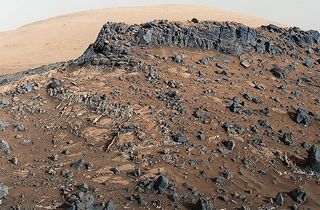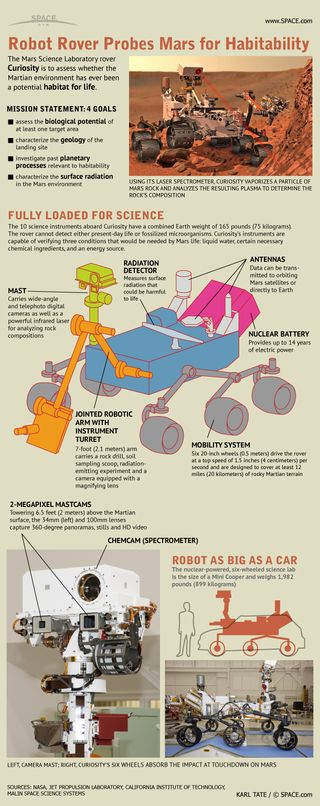Mars Rover Finds Rich Mineral Stew in Fractured Rock

Chemical analysis by NASA's Mars rover Curiosity indicates that water made several repeat appearances to create the rich mineral veins at a site called "Garden City" in the lower part of Mount Sharp.
The veins form in places where fluids have move through fractured rocks, depositing minerals and leaving telltale chemical fingerprints on surrounding areas. Some of the mineral veins at Garden City protrude the equivalent of two finger widths above the now-eroded bedrock in which they formed.
PHOTOS: Curiosity's Epic First Year on a Mars Mountain

The site was not accessible to Curiosity's drill, but in March the rover zapped 17 targets with its ChemCam laser and discovered a diverse chemical stew.
"I think this has some of the most extreme chemistry that we've seen in a very localized area. There's been other places where we've seen very strong chemistry, but in this kind of meter-square area, up until this point I don't think we've seen anywhere with this much variability and this much unexpected chemistry," Curiosity scientist Diana Blaney, with NASA's Jet Propulsion Laboratory in Pasadena, Calif, told Discovery News.
Many of the veins contain rich deposits of calcium sulfate. Others are laced with magnesium sulfate or fluorine. Levels of iron vary.
The three-mile-high Mount Sharp rises from the floor of a huge impact basin that once held water. The Garden City veins were created after mud in the lake had hardened into rock and cracked.
Get the Space.com Newsletter
Breaking space news, the latest updates on rocket launches, skywatching events and more!
ANALYSIS: Curiosity Has Hit a Martian Mineral Jackpot
"At Garden City, because there's such good preservation and we get the cross-cutting, we're able to start pulling out some chemical signatures that we saw at different places into distinct fluids. And by looking at the cross-cutting relationships and the difference in chemistries, I think we have really strong evidence that they're distinct fluid events," Blaney said.
"We don't know how far apart in time these different events occurred, or what was driving them," she added. "I think as we get more information on what it's going to take to chemically evolve these fluids, we might be able to pin that down."
Curiosity is scouring Mount Sharp to look for habitats that could have supported past life and for places suitable to preserve organics.
"Veins have a good potential — because it's a fluid and there is crystallization — to include things as inclusions, but the organic preservation has a lot of factors," Blaney said.
NEWS: Curiosity's Mars Crater was Once a Vast Lake

The rover is currently exploring younger, higher regions of the mountain.
The research was presented this week at an American Astronomical Society planetary science meeting in National Harbor, Maryland.
This article was provided by Discovery News.
Join our Space Forums to keep talking space on the latest missions, night sky and more! And if you have a news tip, correction or comment, let us know at: community@space.com.

Irene Klotz is a founding member and long-time contributor to Space.com. She concurrently spent 25 years as a wire service reporter and freelance writer, specializing in space exploration, planetary science, astronomy and the search for life beyond Earth. A graduate of Northwestern University, Irene currently serves as Space Editor for Aviation Week & Space Technology.
